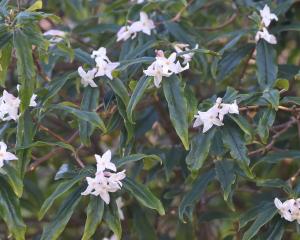
The heyday of the wider forms of topiary with its giant chess pieces and ornamentation was the 17th century when gardeners had competitions with each other to produce extravagant forms of living geometry.
Topiary was not confined to just shaping individual plants as Knot gardens had already been recognised as garden features, becoming fashionable in the 15th century during the Tudor period. This style of garden design was followed by the parterre with its intricate formality of design and detail, which leads me on to challenging the idea that a living hedge must be formal, straight and symmetrical.
There are requirements you need from a plant to achieve a good hedge. They must respond well to regular clipping to keep them dense — they can be either evergreen or deciduous plants, both make a good hedge — and must be the right species for the location or purpose you have in mind. A hedge can be any shape and design you wish so planting a new hedge gives you an opportunity to express your personal garden style.
Garden Life is produced by Dunedin Botanic Garden. For further information contact David Askin.












